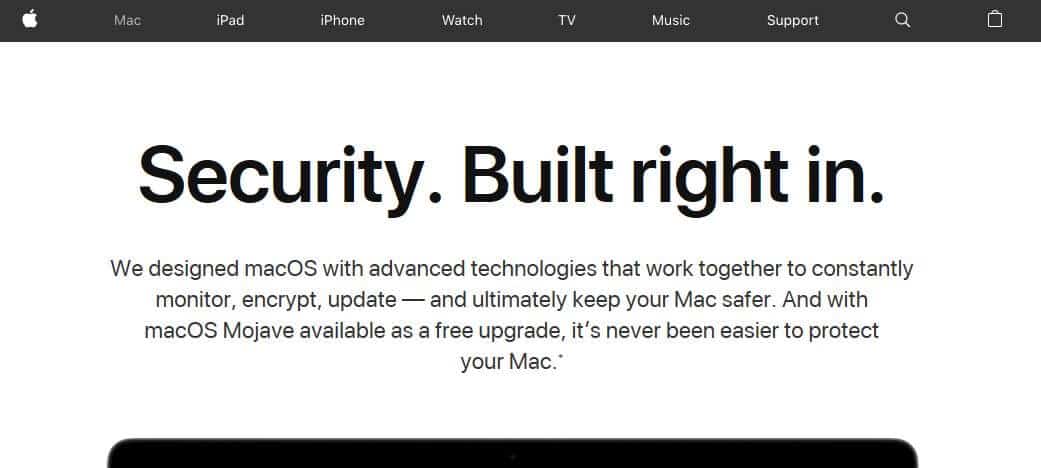

- #Antivirus for mac mojave how to
- #Antivirus for mac mojave mac os x
- #Antivirus for mac mojave update
- #Antivirus for mac mojave pro
- #Antivirus for mac mojave software
Another downside of PUAs is that they gather browsing-related and other data. If clicked, they might redirect to untrustworthy websites or even execute scripts designed to download/install other unwanted apps. When displayed, they conceal underlying content of visited websites. These are usually displayed via tools that enable placement of third party graphical content on any site. PUAs mentioned in our introduction also deliver coupons, banners, and other similar intrusive ads. If it cannot be closed normally, use Activity Monitor and 'force quit' the entire browser. Simply close the deceptive website and avoid returning to it in future.
#Antivirus for mac mojave software
Do not download the software offered, and certainly do not pay for it. Note that Apple has nothing to do with the "Your MacOS 10.14 Mojave Is Infected With 3 Viruses!" virus alert.

Generally, they claim to be 'technicians' (in this case, representatives of Apple) and either offer purchase of a product that will fix the problem (in this case, the virus infection) or attempt to trick people into paying for technical guidance or other services.
#Antivirus for mac mojave pro
At time of research, scammers promoted the Mac Cleanup Pro software. This is typical behaviour of scammers who use various fake messages. The scammers behind this fake virus alert use it to promote software that, according to the message, will remove the viruses that were detected. It goes on to state that if no action is taken, data such as apps, photos, and other files might be in danger and could be lost. According to the claims, the system is infected with three viruses: two malware and one spyware infection. The message in the "Your MacOS 10.14 Mojave Is Infected With 3 Viruses!" pop-up window states that the Mac operating system is infected with a trojan virus (e.tre456_worm_osx) and immediate action is required. PUAs are installed without direct permission, cause unwanted redirects, deliver intrusive ads, and record browsing-related and other data. In most cases, users do not visit these websites intentionally - potentially unwanted applications (PUAs) cause these redirects. "Your MacOS 10.14 Mojave Is Infected With 3 Viruses!" is a fake virus alert message that is displayed for MacOS users who visit untrustworthy and deceptive websites. What is "Your MacOS 10.14 Mojave Is Infected With 3 Viruses!"?
#Antivirus for mac mojave mac os x
Unfortunately, bundled adware is becoming as bad on Mac OS X as it is on Windows.How to remove "Your MacOS 10.14 Mojave Is Infected With 3 Viruses!" from Mac?

Apple has added some adware to the XProtect list, but adware is mostly not blocked. The list of malware is also very limited, with the XProtect file containing 49 definitions at the moment. But it doesn’t take care of cleaning up any existing infections and doesn’t check to make sure your Mac is clean in the background. XProtect is just a convenient way for Apple to blacklist individual pieces of malware.
#Antivirus for mac mojave how to
RELATED: How to Open Apps from "Unidentified Developers" on Your Mac This allows Apple to put the brakes on any bit of Mac malware before it gets too out of control and ensures your Mac is protected from downloading any old pieces of malware out there. It’s just looking for a handful of bad files Apple has specifically listed. Unlike other antivirus applications, XProtect doesn’t use any sort of advanced heuristics. It only checks downloaded files run through File Quarantine, which makes it similar to the SmartScreen feature on Windows. It’s designed to sit between your Mac and the web, preventing you from running a few known-malicious applications. RELATED: Mac OS X Isn't Safe Anymore: The Crapware / Malware Epidemic Has Begun
#Antivirus for mac mojave update
If you disable it, your Mac won’t update its XProtect file with the latest definitions from Apple. Ensure the “Install system data files and security updates” option is enabled. To view this setting, click the Apple menu, select System Preferences, and click the App Store icon. Malware definition updates arrive through Apple’s normal software update process. Like other software updates on Mac OS X, these are enabled by default, but can be disabled. When you open a downloaded application, File Quarantine checks if it matches any of the malware definitions in the XProtect file. If it does, you’ll see a nastier warning message that says running the file will damage your computer and informing you which malware definition it matches. You can even open this file and see the list of malicious applications Mac OS X is checking for when you open downloaded application files. Back in 2009, Apple made File Quarantine also check downloaded application files against a list stored in the System/Library/Core Services/CoreTypes.bundle/Contents/Resources/ist file on your Mac.


 0 kommentar(er)
0 kommentar(er)
